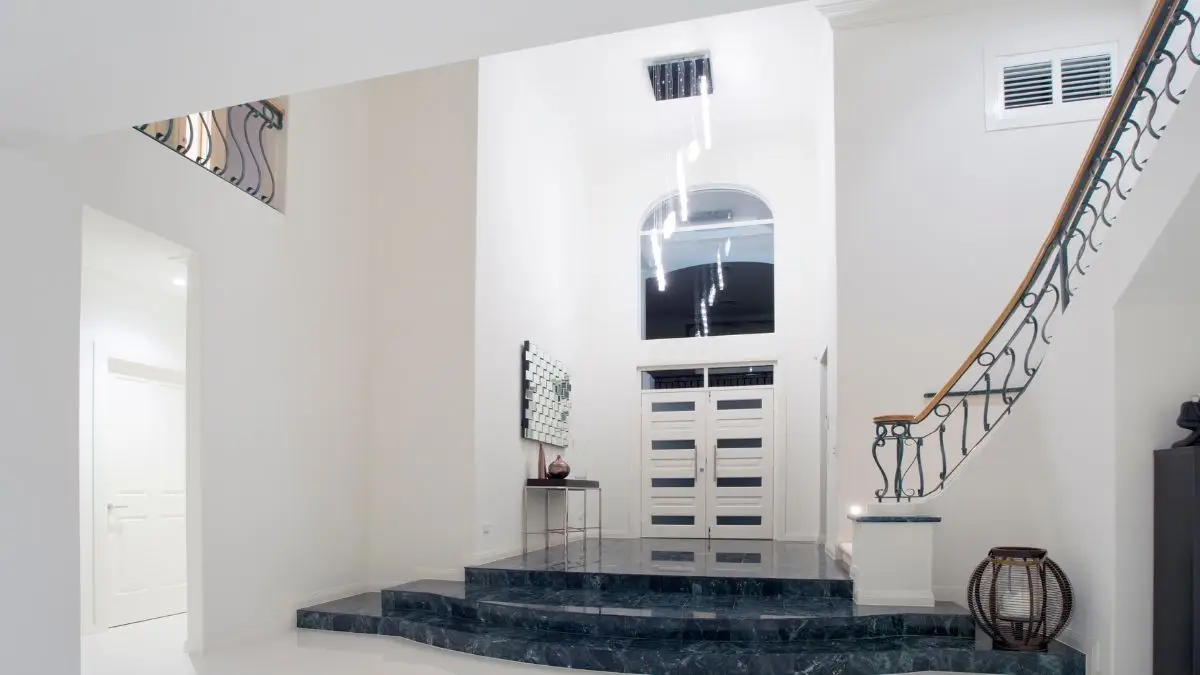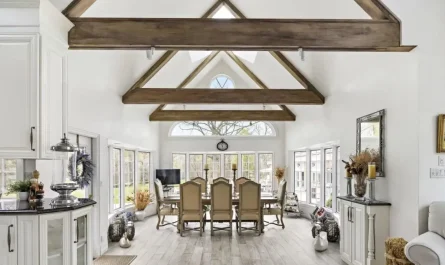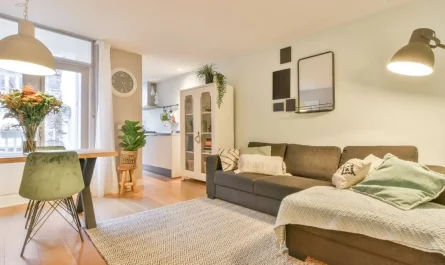Mark Zuckerberg Expands Hawaii Compound by Nearly 1,000 Acres
I wasn’t surprised when I saw Mark Zuckerberg’s name back in the headlines—but this time, it wasn’t about AI, Threads, or Meta. It was about land. A lot of it.
Earlier this year, Zuckerberg quietly added another 962 acres to his already sprawling estate on the Hawaiian island of Kauai. That brings his total land ownership there to over 2,300 acres—nearly the size of a small town.
And unless you’ve been following this closely, you probably missed the update. That’s because the deal didn’t show up in any flashy Meta press release. It was tucked away in planning documents, masked behind a Hawaiian-sounding LLC, and only came to light after Wired dug through permits and spoke to people involved.
The price tag? Over $65 million for this one purchase alone. Add that to his previous buys, and Zuckerberg’s Hawaii estate now tops $300 million in total value.
To put that in perspective—his estate is now worth more than Kauai’s annual operating budget. One man’s personal compound costs more than it takes to run an entire Hawaiian island for a year.
You can probably guess how that’s going over with locals.
From $100M to $300M — How Zuckerberg’s Land Grab Exploded in 10 Years
Let me break this down for you—because this isn’t some one-time splurge. Zuckerberg has been at this for over a decade now.
It started in 2014, when he bought around 700 acres near Kilauea on Kauai’s north shore. According to
Robb Report
, he shelled out roughly $100 million for that first piece of paradise. Since then, the buying hasn’t stopped.
By 2021, he had over 1,400 acres. And now, with the new $65 million deal finalized earlier this year, that number’s jumped to 2,300+ acres. That’s more than three square miles of Hawaiian coastline, forest, and ranchland—owned by one man.
In total, his Koʻolau Ranch is now valued at over $300 million. Just to compare: Kauai County’s entire annual operating budget is about $311 million. That means Zuckerberg’s estate alone is worth more than the local government’s budget to run schools, roads, and services for an entire island.
And if you’re wondering—no, there was no press conference, no social media post. Just a quiet land deal, filed under a friendly-sounding LLC, and discovered later by reporters.
You and I both know land this sacred doesn’t come without history—or consequences.
Inside Koʻolau Ranch: What’s Really Being Built Behind the Gates
If you’re picturing a cozy beach house, think again.
This estate is massive. We’re talking multiple mansions, a gym, treehouses, a tennis court, and a private water system. And then there’s the underground shelter—a concrete tunnel with blast-resistant doors and a hidden escape hatch, reportedly the size of a pro basketball court.
And that’s just what’s already built.
Now, according to
Realtor
, new permits reveal Zuckerberg wants to add even more. Three more structures—each between 7,800 and 11,000 square feet. That’s 10 times the size of a typical Hawaiian home.
Two of those buildings are basically dormitories: 16 bedrooms and 16 bathrooms each, plus shared lanais. The price tag? About $3.5 to $4 million per building.
And yes, these aren’t just luxury guesthouses—they’ll have motion sensors, keypad locks, and full security systems throughout. His team says they’re meant for “short-term guests,” but let’s be honest—you don’t build dorms like that unless you’re running something big.
This isn’t a vacation home. It’s a compound.
And while we watch it grow from the outside, you have to wonder—what’s really the endgame here?
Compared to other celebrity estates that often shift on and off the market, like
Adam Lambert’s Hollywood Hills property
, Zuckerberg’s compound isn’t just a trophy—it’s a transformation project.
The Sacred Land Beneath: Graves, NDAs, and Silent Fears
Now here’s where things get personal—especially for Native Hawaiians.
Part of Zuckerberg’s land sits directly on an ancestral burial site. One man, Julian Ako, spent months just trying to access and register the graves of his great-grandmother and her brother. That should’ve been simple. But it wasn’t.
Even the state later confirmed there’s a “high probability” of more human remains in the area.
Zuckerberg’s team says the known burial plots are fenced and maintained. They also say workers must report any finds immediately. But here’s the catch—many workers have signed NDAs. Which means, even if they did discover bones while digging foundations or installing security fences, they might never be able to speak up.
That’s not just uncomfortable—it’s haunting.
You and I both know you can’t put a price on legacy. And no amount of fencing or PR can undo the damage when sacred history is quietly covered up—or buried deeper.
What do you think — should ancestral land be off-limits to private development, no matter how rich the buyer is? Drop your thoughts below—I’d really like to hear your take.
Secrecy, Surveillance, and the Billionaire Playbook
Let me ask you something—if you spent $300 million on property, would you do it in public or under the radar?
Zuckerberg clearly chose the second option.
Most of these land deals have been done through LLCs with Hawaiian names, likely to blend in and avoid attention. New construction only came to light when
Wired
and
Architectural Digest
started piecing together planning documents and satellite images.
Inside the estate? It’s a fortress. Cameras. Motion sensors. Gates. Underground structures. Guesthouses wired like they belong in a sci-fi movie.
What makes it even more unnerving? Workers are bound by strict non-disclosure agreements. Some locals claim you can’t even ask basic questions without being met with silence—or a lawyer.
If it feels like there’s something secretive happening here, you’re not alone in thinking that. And in a place like Hawaii, where community and openness mean everything, this kind of hyper-privacy doesn’t sit right.
By the way, a few of the more revealing updates on this story—and others like it—have been quietly circulating on niche WhatsApp channels where local tips and planning leaks sometimes surface before the press does. If you’re someone who follows these things closely, it’s worth keeping an eye on those conversations.
“This Won’t Be Hawaii Anymore”: What Locals Are Saying
You can hear the frustration when locals speak—and I don’t blame them.
“It’s not going to look like Hawaii anymore,” said Puali‘i Rossi, a professor of Native Hawaiian studies, in an interview with Wired. And honestly? That quote hits hard.
The truth is, Zuckerberg isn’t the only billionaire buying up paradise. Jeff Bezos, Larry Ellison, Oprah Winfrey—they’re all scooping up huge slices of land across the islands. But when one man owns over 2,300 acres and starts building fortified dorms and bunkers, it hits differently.
That might sound extreme to some, but if you’ve grown up on the island, watching land prices soar and families pushed out, it probably feels like survival.
You don’t have to live in Hawaii to understand the fear. When a place starts changing so fast, and you have no say in it, it’s not just a loss of property—it’s a loss of identity.
And while stars like
Lily Collins quietly move on from their LA homes
, the tone in Hawaii is different—here, land changes aren’t just sales; they feel like shifts in cultural ownership.
Conservation or PR Move? What Zuckerberg Says He’s Really Doing
Here’s the part where things get tricky.
Zuckerberg and his wife Priscilla Chan say their goals are simple: ranching, farming, and conservation. They’ve even scrapped previous plans to build 80 luxury homes on the site after locals pushed back. On paper, that sounds like a step in the right direction.
They’ve also funded native fishpond restoration, planted macadamia orchards, and run cattle on the land—things that technically support sustainability. According to Wired, Zuckerberg’s team insists that Koʻolau Ranch isn’t just for privacy—it’s for stewardship.
But here’s the question I can’t shake:
If it’s all about conservation, why the blast-proof bunkers, dorm-style compounds, and layers of armed-style security? Why the non-disclosure agreements and the missing community input?
You and I both know real conservation includes the people who live on the land—not just the ones who bought it.
Intent matters, but so does transparency. And when you own more land than most towns but still operate behind fences and legal walls, people are going to wonder what the real story is.
The Billionaire Effect — How Private Fortresses Are Changing Hawaii
This isn’t just about Zuckerberg anymore.
Across Hawaii, we’re seeing a clear pattern. Billionaires—Larry Ellison, Oprah, Bezos—are quietly buying up islands, coastlines, and remote ranchland. Most do it quietly, using shell companies. Few talk about it publicly.
But the impact? That’s not quiet.
Locals are being priced out. Housing inventory is drying up. Cultural sites are fenced off or “protected” under private hands. Public beaches feel less public. The soul of Hawaii is slowly shifting from native hands to billionaire portfolios.
Zuckerberg’s estate might be the largest, but it’s not an exception. It’s the blueprint.
Native leaders are warning that Hawaii is heading toward becoming a “resort archipelago for the ultra-rich.” And once that shift is complete, there’s no easy way back.
If you’re reading this from the mainland, this might feel distant. But this is the same story playing out in Lake Tahoe, Montana, Austin, and so many other places.
When land becomes investment, communities lose roots.
In mainland markets, we’re used to dramatic price swings—like
Justin Bieber’s Beverly Hills rental taking a major price cut
—but in Hawaii, price isn’t the only issue. It’s who gets to shape the future of the land.
Why This Should Matter to You — Even If You’re Not in Hawaii
You might be thinking, “It’s his money. Let him spend it how he wants.”
But here’s the thing—you don’t need to live on Kauai to feel the ripple effects of this story.
When billionaires start buying land not just to live—but to control—entire environments, it affects everyone. It sets precedents. It shapes policy. It teaches future elites that public land can become private comfort, if they move quietly enough.
If you live in a place with natural beauty, cultural history, or low regulation—this could be your story next.
And for Hawaiians, it’s not just real estate. It’s their ancestors, their access to shoreline, their future housing, their sense of place.
Want more stories like this one—where homes, headlines, and billionaires collide? Explore more in our
Real Estate & Homeownership
section.
Disclaimer:
This article is based on publicly available reports, planning documents, and credible media sources. It does not make legal or personal accusations. All perspectives included aim to inform and spark discussion respectfully.
Table of Contents
-
From $100M to $300M — How Zuckerberg’s Land Grab Exploded in 10 Years
-
Inside Koʻolau Ranch: What’s Really Being Built Behind the Gates
-
The Sacred Land Beneath: Graves, NDAs, and Silent Fears
-
Secrecy, Surveillance, and the Billionaire Playbook
-
“This Won’t Be Hawaii Anymore”: What Locals Are Saying
-
Conservation or PR Move? What Zuckerberg Says He’s Really Doing
-
The Billionaire Effect — How Private Fortresses Are Changing Hawaii
-
Why This Should Matter to You — Even If You’re Not in Hawaii




